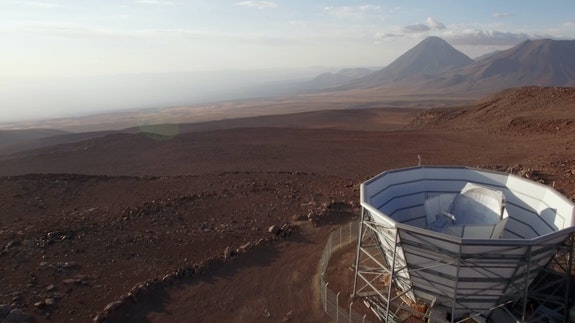An international team including scientists from Cardiff University have provided a new estimate of the age of the universe, placing it at roughly 13.77 billion years old.
This new measurement, made using the Atacama Cosmology Telescope (ACT) in South America, adds a new twist to an ongoing debate over the exact age of the universe.
The estimate matches that made by the Planck satellite and adds support to the current standard model of the universe; however, it differs from measurements made in 2019 based on a different methodology using the movement of galaxies.
“Having worked on extracting the cosmological parameters from both ACT and Planck for almost a decade, it was very rewarding to see the two experiments agree,” says Erminia Calabrese, an STFC Rutherford Fellow and Professor of Astrophysics in the School of Physics and Astronomy.
Professor Calabrese has been leading the analysis work to extract the new cosmological results and is lead author on one of two new papers submitted to arXiv.org.
The findings from these studies were made possible using the University’s high-performance computing resources, enabled by ARCCA (Advanced Research Computing at Cardiff).
Like the Planck satellite, ACT peers at the afterglow of the Big Bang. This light, known as the cosmic microwave background (CMB), marks a time 380,000 years after the universe’s birth when protons and electrons joined to form the first atoms.
If scientists can estimate how far light from the CMB travelled to reach Earth, they can calculate the universe’s age. Scientists measure the angle in the sky between two distant objects, with Earth and the two objects forming a cosmic triangle. If scientists also know the physical separation between those objects, they can use high-school geometry to estimate the distance of the objects from Earth.
Subtle variations in the CMB’s glow offer anchor points to form the other two vertices of the triangle and scientists have a strong enough understanding of the universe’s early years to know that these variations in the CMB should typically be spaced out every billion light-years for temperature and half that for polarization.
The age of the universe immediately tells us how fast the cosmos is expanding, a number quantified by the Hubble constant.
The ACT measurements suggest a Hubble constant of 67.6 kilometres per second per megaparsec.
That means an object 1 megaparsec (around 3.26 million light-years) from Earth is moving away from us at 67.6 kilometres per second due to the expansion of the universe.
This matches almost exactly the previous estimate of 67.4 kilometres per second by the Planck satellite team, and slower than the 74 kilometres per second inferred from the measurements of galaxies.





























